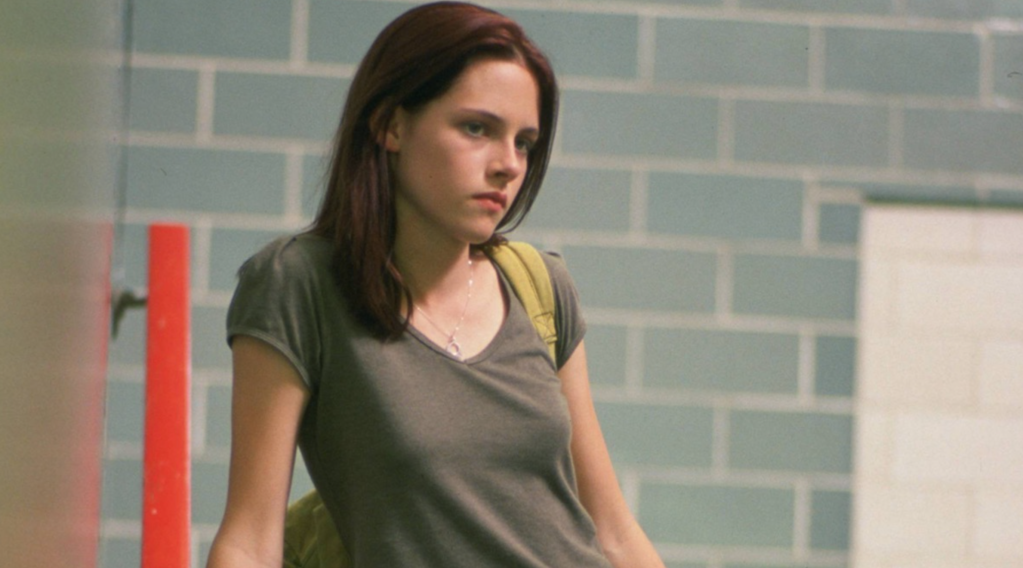Jessica Sharzer’s Speak (2004) begins with its lead character, a 14-year-old girl named Melinda (Kristen Stewart), sitting on her bedroom floor in front of a mirror, drawing stitches over her lips. She’s been keeping a secret: she was raped, during a house party over the summer, by a high-school senior who’s also a star football player. Melinda doesn’t feel like she can disclose what’s happened because she fears nobody will believe her. In her traumatized haze, she tried calling the police at the party to report what happened, but because she fearfully froze on the line, the cops ended up breaking up the party instead, making Melinda earn the ire of both attendees and those who’ve caught wind of a faux pas whose motivation they’re unaware of.
Speak begins at what’s poised to be Melinda’s worst school year yet: still rattled from a sexual assault about which she’s still not sure about saying anything, ostracized by the student body and, most devastatingly, dumped by the onetime best friends who refuse to hear out what might have made her become, to their eye, an unforgivable fun sucker. She decides to stop speaking, only ever moved to say something when she has to. Based on Laurie Halse Anderson’s semi-autobiographical 1999 novel, the movie will see Melinda eventually start to regain the confidence that’s been taken from her — a process most aided by an encouraging art teacher (Steve Zahn) resolute about her translating the pain she won’t make explicit into art — without softening the difficult reality of coming forward post-rape in a landscape likelier to look for reasons to villainize the victim than consider believing their testimonies to be true.
Silence doesn’t prove an effective tool for Melinda, but you never don’t understand why she turns toward temporary muteness as a coping strategy. If her classmates are still this hostile when she’s not saying anything at all, how will they react upon hearing that one of the most popular kids in school is not the golden boy he’s been propped up to be? Speak can be clunky in some of its overly insistent musical cues and its choice to half-heartedly include voiceover narration from Melinda to unnecessarily fill in blanks. (Some of that over-explanation makes it easy to see why, after it premiered to positive notices at the 2004 Sundance Film Festival, Speak ran on Lifetime and Showtime in lieu of a theatrical release: a TV movie is not a medium that particularly likes ambiguity.) But Speak’s depiction of high-school dynamics and how social hierarchies can protect those living in their higher rungs is incisive.
Speak marked the first time Stewart led a movie. It’s remarkable how already strong the idiosyncrasies she would later become celebrated for in some circles and mocked in others — her sharp use of fidgety body language, the emotional universes conveyed sometimes in just a flicker of her eyes — were when she was barely out of middle school. Her wise-beyond-her-years-ness recalls Jodie Foster, who fittingly played her mother in 2002’s Panic Room and who too spent her childhood acting but did not perform with the same mugging-heavy precocity one tends to expect from kid actors. (You feel this especially strongly in Speak when Stewart is acting against Allison Siko, who plays an overachiever character with all the believability of someone starring in a Disney Channel sitcom.) I can’t imagine watching Speak in 2004 and not feeling like its young lead was destined for greatness; it’s invigorating to watch it today knowing that Stewart’s prowess wasn’t so much cultivated with time but always there.
